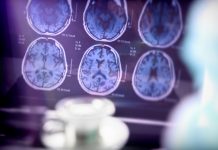Elliot Grantham, Market Development Manager at Medtronic, discusses the challenges in stroke care and how it could be improved for stroke patients
Stroke is one of the leading causes of death and disability in the UK, and the overall costs attributed to the condition is a staggering £25.6 billion per year. (1) Challenges surrounding the prevention, treatment and management of the resulting illness or death from stroke lead to high economic consequences, not just for healthcare services but also across wider society. (2)
Timely detection and diagnosis of a stroke is vital to improving patient outcomes; according to the National Institutes of Health (NIH), the window for starting treatment is three hours, but patients must reach the hospital within 60 minutes for evaluation and treatment. Diagnosing a stroke can be challenging; patients may present at ED departments with less common symptoms, such as those associated with acute vestibular syndrome, including dizziness, vertigo, and nausea, which can impact diagnosis.
In the first 12 months after a stroke, the average total societal cost of care is £45,409, with an additional £24,778 incurred in subsequent years. (2) Considering that a quarter of strokes happen among people of working age, stroke survivors and caregivers often face lost employment opportunities and earnings, which contributes to the overall societal impact of the condition. (1)
Secondary stroke prevention and atrial fibrillation
Whilst political focus and strategy has delivered progress in stroke prevention, medication, and rehabilitation, there are still huge opportunities to improve stroke care, particularly in preventing survivors from having further strokes.
For about one third of ischemic stroke (blood supply to the brain is obstructed) survivors, the root cause is undetermined despite in-hospital investigations such as cardiac monitoring. These strokes of unknown cause are classified as cryptogenic. (3) The inability to find the cause with more traditional tests means these patients are often discharged without answers. One in four stroke survivors will have a further stroke in the following five years. (4,5)
Up to 30% of cryptogenic strokes are the result of atrial fibrillation (AF) – a type of irregular heartbeat that can cause blood clots to form in a patient’s heart. (6) The consequences of a second AF-related stroke can be much more severe, with higher mortality and greater disability than strokes with other aetiologies. (4,5) AF can only be treated with appropriate therapies or medications once identified. In cryptogenic stroke patients, AF often has very few symptoms and occurs intermittently, which makes its detection very challenging. It is estimated that 7,000 strokes could be prevented and over 2,000 lives saved every year in England if people with AF are adequately treated. (7)
Clinical studies have shown the average time to detection of AF in cryptogenic stroke patients to range from 30 to 162 days. (8-18) Traditional in-hospital cardiac monitoring options range from 24 hours to 14 days, which begs the question, how effective are these methods likely to be in detecting the AF so that a treatment plan can be initiated?
Prolonged cardiac monitoring
Having listened to several healthcare professionals across the UK, the inability to access effective cardiac monitoring options leaves them relatively helpless in diagnosing the cause of cryptogenic stroke. They have seen the devastation that an AF-related stroke can cause and are therefore very determined to ensure that the chance to detect it is not missed. To achieve this, patients require consistent, regular, and prolonged heart monitoring, which, despite clinical guidance, is not the current standard of care.
Insertable cardiac monitors (ICMs) are diagnostic devices that monitor patients’ heart and rhythm for up to several years, 24 hours a day. This gives the healthcare professional the best possible chance of detecting AF, even if the patient shows no symptoms. These devices are inserted just under the skin in an outpatient, minor procedure setting.
The digital technologies utilised in ICMs allow stroke patients to be monitored remotely, with the clinical teams in the hospital being made aware of any abnormalities in the patient’s heart rhythm. This gives the patient peace of mind and negates the need for regular hospital visits, reducing the number of clinic appointments and contributing to healthcare’s environmental sustainability goals.
Ultimately, ICMs have been shown to deliver the highest rate of AF detection of all cardiac monitoring options. In simple terms, this monitoring option provides the best platform to diagnose and treat AF, leading to reduced numbers of severe, life-threatening secondary strokes.
CMs and Artificial Intelligence
Digital technology has undoubtedly transformed healthcare, delivering improved clinical outcomes and efficiencies. This includes the use of artificial intelligence (AI), which has advanced significantly in recent years.
The use and benefits of AI technology now exist within the ICM field. Intelligent algorithms are being utilised to improve diagnostic accuracy, insights, and efficiency. With AI making it easier for clinicians to eliminate non-clinically relevant data or false alerts, the time it takes to review data is reduced while allowing for better-informed treatment plans to be developed. (19)
Healthcare innovation for stroke patients: Current and future state
Current, shorter-term external cardiac monitoring options, whilst ‘low cost’, offer very little in terms of helping to detect AF compared to insertable cardiac monitors. Increasing access to this innovative technology has the potential to not only save lives but also avoid huge societal costs by reducing the number of further catastrophic strokes.
References
- Stroke Association, 2017. Current, future and avoidable costs of stroke in the UK. Available at: https://www.stroke.org.uk/sites/default/files/costs_of_stroke_in_the_uk_report_-executive_summary_part_2.pdf. Last accessed: November 2023.
- Samsa GP, et al., 1999. Epidemiology of Recurrent Cerebral Infarction:
A Medicare Claims–Based Comparison of First and Recurrent Strokes on 2-Year Survival and Cost. Stroke 30:338–349 - Yaghi S, Elkind MS, 2014. Cryptogenic stroke: A diagnostic challenge. Neurology Clinical Practice. 4(5):386-393. doi: 10.1212/CPJ.0000000000000086. PMID: 25317376; PMCID: PMC4196459. NICE.
- Mohan KM, et al., 2011, Stroke. 42:1489-1494.
- Hankey GJ, 2014. Secondary stroke prevention. Lancet Neurology.13(2):178-194.
- Sanna T, et al, 2014. New England Journal of Medicine; 370:2478-2486.
- National Institute for Health and Care Excellence, 2023. Case study: Reveal LINQ – a digital health developer’s journey through NICE, 2023. Available at: https://case-studies.nice.org.uk/reveal-linq/index.html Last accessed: November 2023
- Etgen et al, 2013. Stroke; 44:2007-2009
- Ritter et al, 2013. Stroke; 44:1449-52. Available at:
https://pubmed.ncbi.nlm.nih.gov/23449264/. Last accessed November 2023 - Poli, et al 2016. Eur J Neurol; 23:375-81
- Christensen et al, 2014. Eur J Neurol; 21:884-89
- Rojo-Martinez, 2013. Rev Neurol; 57 (6): 251-257. Available at: https://pubmed.ncbi.nlm.nih.gov/24008935/ Last accessed November 2023
- Ziegler et al, 2015. Cerebrovasc Dis; 40:175-81. Available at: https://pubmed.ncbi.nlm.nih.gov/26314298/ Last accessed November 2023
- Jorfida J, 2014. Cardiovasc Med
- Cotter et al., Neurology. 2013. 80:1546-50. Available at: https://pubmed.ncbi.nlm.nih.gov/23535493/. Last accessed November 2023
- Poli et al, 2016. Insertable cardiac monitors after cryptogenic stroke – a risk factor based approach to enhance the detection rate for paroxysmal atrial fibrillation. Eur J Neurol, 23: 375-381. Available at: https://doi.org/10.1111/ene.12843. Last accessed November 2023.
- Christensen et al, 2014. Paroxysmal atrial fibrillation occurs often in cryptogenic ischaemic stroke. Final results from the SURPRISE study. Eur J Neurol, 21: 884-889. Available at: https://doi.org/10.1111/ene.12400. Last accessed November 2023
- Jorfida et al., 2016. Cryptogenic ischemic stroke and prevalence of asymptomatic atrial fibrillation: a prospective study. Journal of Cardiovascular Medicine, 17, 12: 863-869. Available at: https://doi.org/10.2459/JCM.0000000000000181. Last accessed November 2023
- Medtronic, 2023. LINQ II ICM SYSTEM AccuRhythmTM AI algorithms. Available at: https://www.medtronic.com/us-en/healthcare-professionals/products/cardiac-rhythm/cardiac-monitors/linq-ii/accurhythm-ai-algorithms.html Last accessed: November 2023.
Contributor Details
Editor's Recommended Articles
-
Must Read >> Machine learning identifies physical signs of stroke
-
Must Read >> Breaking new ground in stroke research and care











